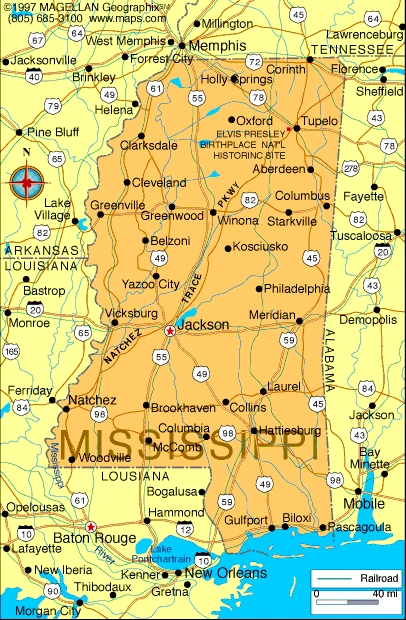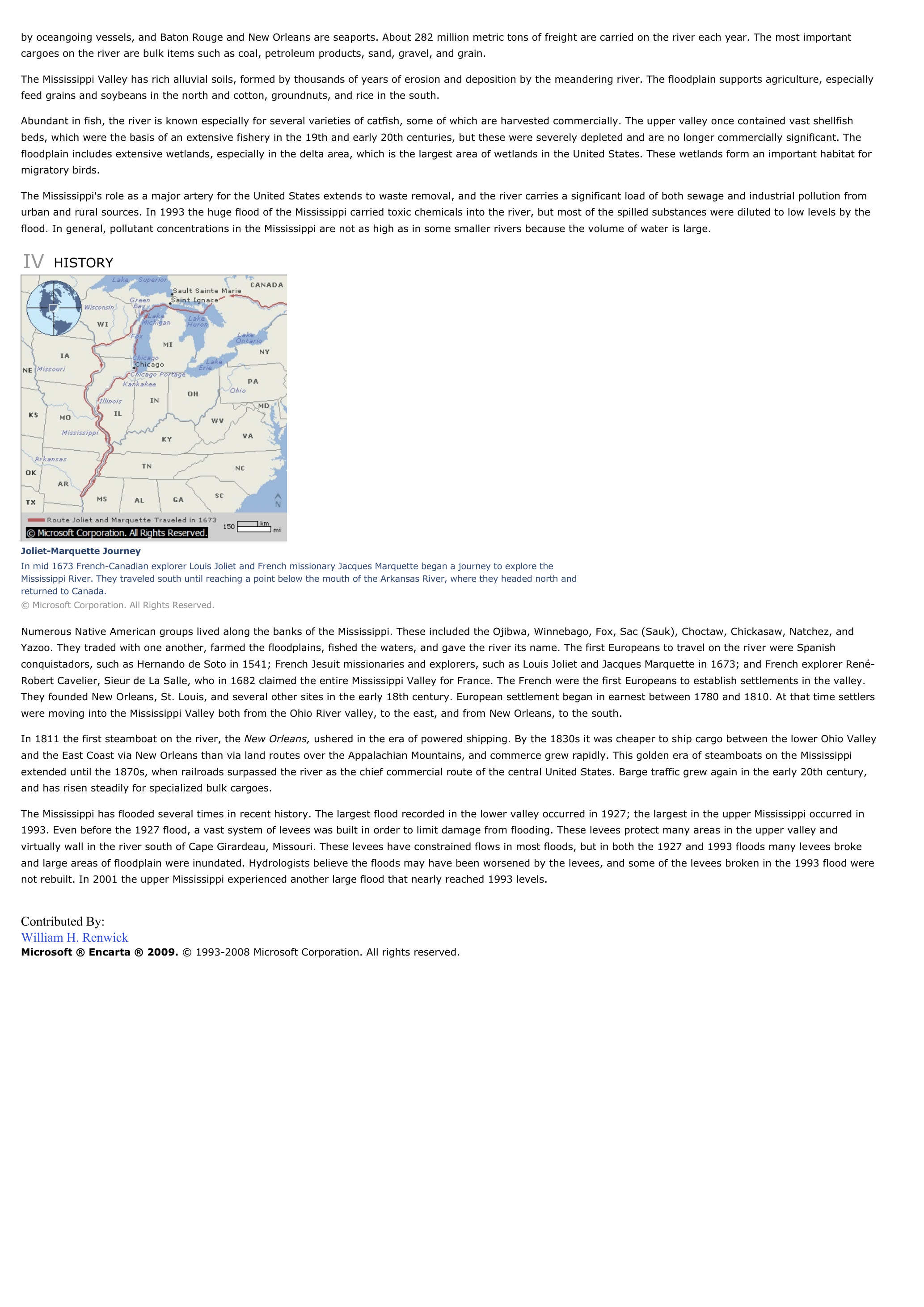Mississippi (river) - geography.
Publié le 26/05/2013

Extrait du document


«
by oceangoing vessels, and Baton Rouge and New Orleans are seaports.
About 282 million metric tons of freight are carried on the river each year.
The most importantcargoes on the river are bulk items such as coal, petroleum products, sand, gravel, and grain.
The Mississippi Valley has rich alluvial soils, formed by thousands of years of erosion and deposition by the meandering river.
The floodplain supports agriculture, especiallyfeed grains and soybeans in the north and cotton, groundnuts, and rice in the south.
Abundant in fish, the river is known especially for several varieties of catfish, some of which are harvested commercially.
The upper valley once contained vast shellfishbeds, which were the basis of an extensive fishery in the 19th and early 20th centuries, but these were severely depleted and are no longer commercially significant.
Thefloodplain includes extensive wetlands, especially in the delta area, which is the largest area of wetlands in the United States.
These wetlands form an important habitat formigratory birds.
The Mississippi's role as a major artery for the United States extends to waste removal, and the river carries a significant load of both sewage and industrial pollution fromurban and rural sources.
In 1993 the huge flood of the Mississippi carried toxic chemicals into the river, but most of the spilled substances were diluted to low levels by theflood.
In general, pollutant concentrations in the Mississippi are not as high as in some smaller rivers because the volume of water is large.
IV HISTORY
Joliet-Marquette JourneyIn mid 1673 French-Canadian explorer Louis Joliet and French missionary Jacques Marquette began a journey to explore theMississippi River.
They traveled south until reaching a point below the mouth of the Arkansas River, where they headed north andreturned to Canada.© Microsoft Corporation.
All Rights Reserved.
Numerous Native American groups lived along the banks of the Mississippi.
These included the Ojibwa, Winnebago, Fox, Sac (Sauk), Choctaw, Chickasaw, Natchez, andYazoo.
They traded with one another, farmed the floodplains, fished the waters, and gave the river its name.
The first Europeans to travel on the river were Spanishconquistadors, such as Hernando de Soto in 1541; French Jesuit missionaries and explorers, such as Louis Joliet and Jacques Marquette in 1673; and French explorer René-Robert Cavelier, Sieur de La Salle, who in 1682 claimed the entire Mississippi Valley for France.
The French were the first Europeans to establish settlements in the valley.They founded New Orleans, St.
Louis, and several other sites in the early 18th century.
European settlement began in earnest between 1780 and 1810.
At that time settlerswere moving into the Mississippi Valley both from the Ohio River valley, to the east, and from New Orleans, to the south.
In 1811 the first steamboat on the river, the New Orleans, ushered in the era of powered shipping.
By the 1830s it was cheaper to ship cargo between the lower Ohio Valley and the East Coast via New Orleans than via land routes over the Appalachian Mountains, and commerce grew rapidly.
This golden era of steamboats on the Mississippiextended until the 1870s, when railroads surpassed the river as the chief commercial route of the central United States.
Barge traffic grew again in the early 20th century,and has risen steadily for specialized bulk cargoes.
The Mississippi has flooded several times in recent history.
The largest flood recorded in the lower valley occurred in 1927; the largest in the upper Mississippi occurred in1993.
Even before the 1927 flood, a vast system of levees was built in order to limit damage from flooding.
These levees protect many areas in the upper valley andvirtually wall in the river south of Cape Girardeau, Missouri.
These levees have constrained flows in most floods, but in both the 1927 and 1993 floods many levees brokeand large areas of floodplain were inundated.
Hydrologists believe the floods may have been worsened by the levees, and some of the levees broken in the 1993 flood werenot rebuilt.
In 2001 the upper Mississippi experienced another large flood that nearly reached 1993 levels.
Contributed By:William H.
RenwickMicrosoft ® Encarta ® 2009. © 1993-2008 Microsoft Corporation.
All rights reserved..
»
↓↓↓ APERÇU DU DOCUMENT ↓↓↓
Liens utiles
- Mississippi (river) - Geography.
- Mississippi - geography.
- St. Lawrence (river) - Geography. I INTRODUCTION St. Lawrence (river) (French Saint-Laurent), river
- Amazon (river) - Geography.
- Colorado (river, North America) - Geography.

































